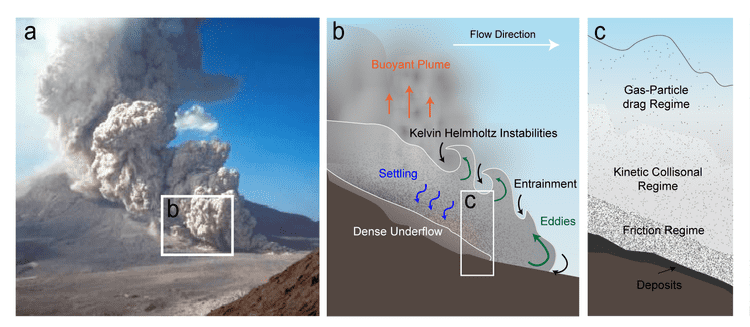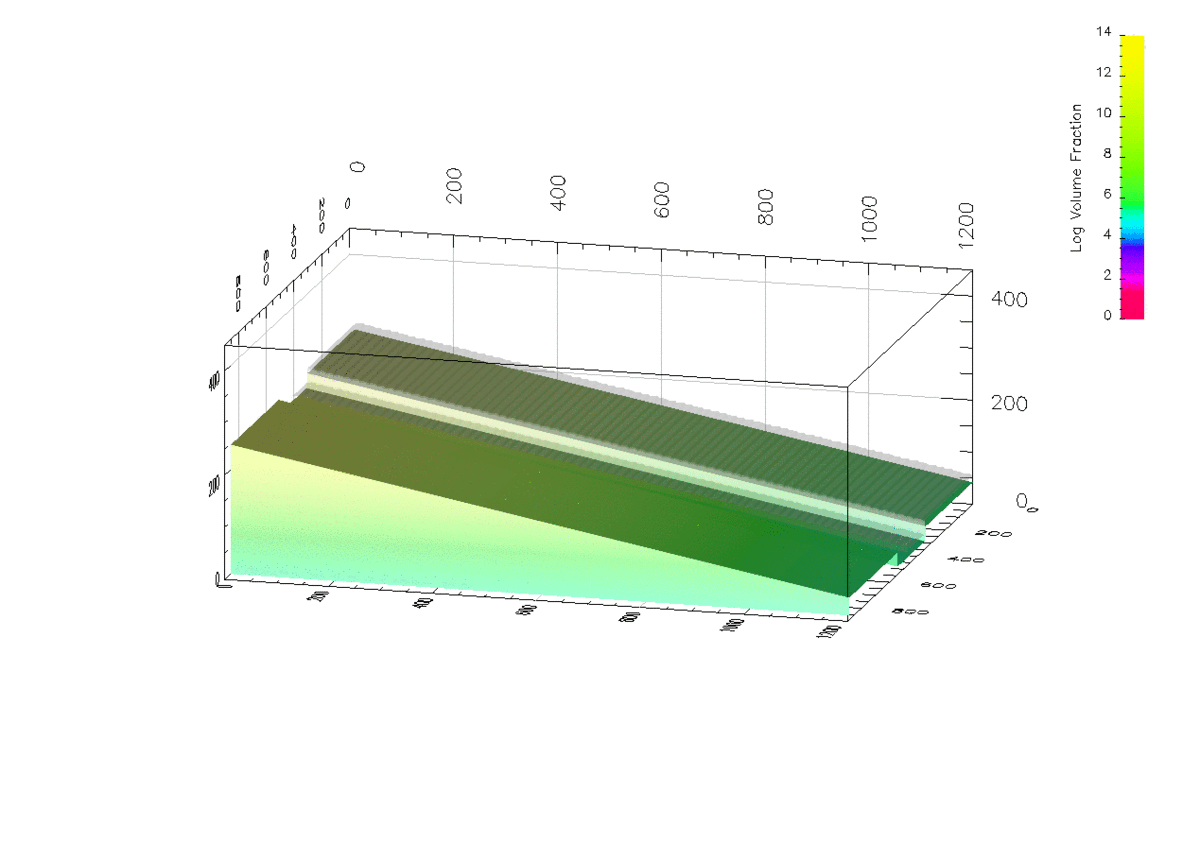How do Pyroclastic Density Currents Interact with Topography?
Collaborator(s): Joe Dufek
Pyroclastic density currents (PDCs) are highly mobile gravity currents produced by volcanic eruptions and have caused more fatalities than any other volcanic hazard [1] . PDCs can have extreme runout distances traveling on order of hundreds of kilometers in large silicic eruptions and small-volume eruptions have been observed traveling on the order of tens of kilometers from initiation at a velocity of over 30 m/s [2]. These flows are noteworthy for their ability to subsume terrain obstacles.
 Figure by Allison Kubo
Figure by Allison Kubo
Inherent to PDCs are large vertical gradients of density, velocity, and dynamic pressure which complicate how they interact with the substrate they flow over. Recent eruptions have illustrated a complex view of how of PDCs interact with topography. Channelization of PDCs, in particular, has large effects on the runout distance and mobility of flows [3][4].
In their relation to hazards and mobility, we are interested in how channelization of PDCs effects their thermal, density, and velocity structures.
We apply multiphase numerical models [5] to capture the vertical stratification of PDCs and model the effects of different channel geometries on the innundation area and velocity.

This work is in prep.
[1]
Auker, M. R., Sparks, R. S. J., Siebert, L., Crosweller, H. S., & Ewert, J. (2013). A statistical analysis of the global historical volcanic fatalities record. JournalS of Applied Volcanology, S2(1), 2.
[2]
Branney, M. J., Kokelaar, P., & Kokelaar, B. P. (2002). Pyroclastic density currents and the sedimentation of ignimbrites. Geological Society of London.
[3]
Komorowski, J. C., Jenkins, S., Baxter, P. J., Picquout, A., Lavigne, F., Charbonnier, S., ... & Budi-Santoso, A. (2013). Paroxysmal dome explosion during the Merapi 2010 eruption: Processes and facies relationships of associated high-energy pyroclastic density currents. Journal of Volcanology and Geothermal Research, 261, 260-294.
[4]
Brand, B. D., Mackaman-Lofland, C., Pollock, N. M., Bendaña, S., Dawson, B., & Wichgers, P. (2014). Dynamics of pyroclastic density currents: Conditions that promote substrate erosion and self-channelization—Mount St Helens, Washington (USA). Journal of Volcanology and Geothermal Research, 276, 189-214.
[5] Dufek, J., & Bergantz, G. W. (2007). Suspended load and bed-load transport of particle-laden gravity currents: the role of particle–bed interaction. Theoretical and Computational Fluid Dynamics, 21(2), 119-145.